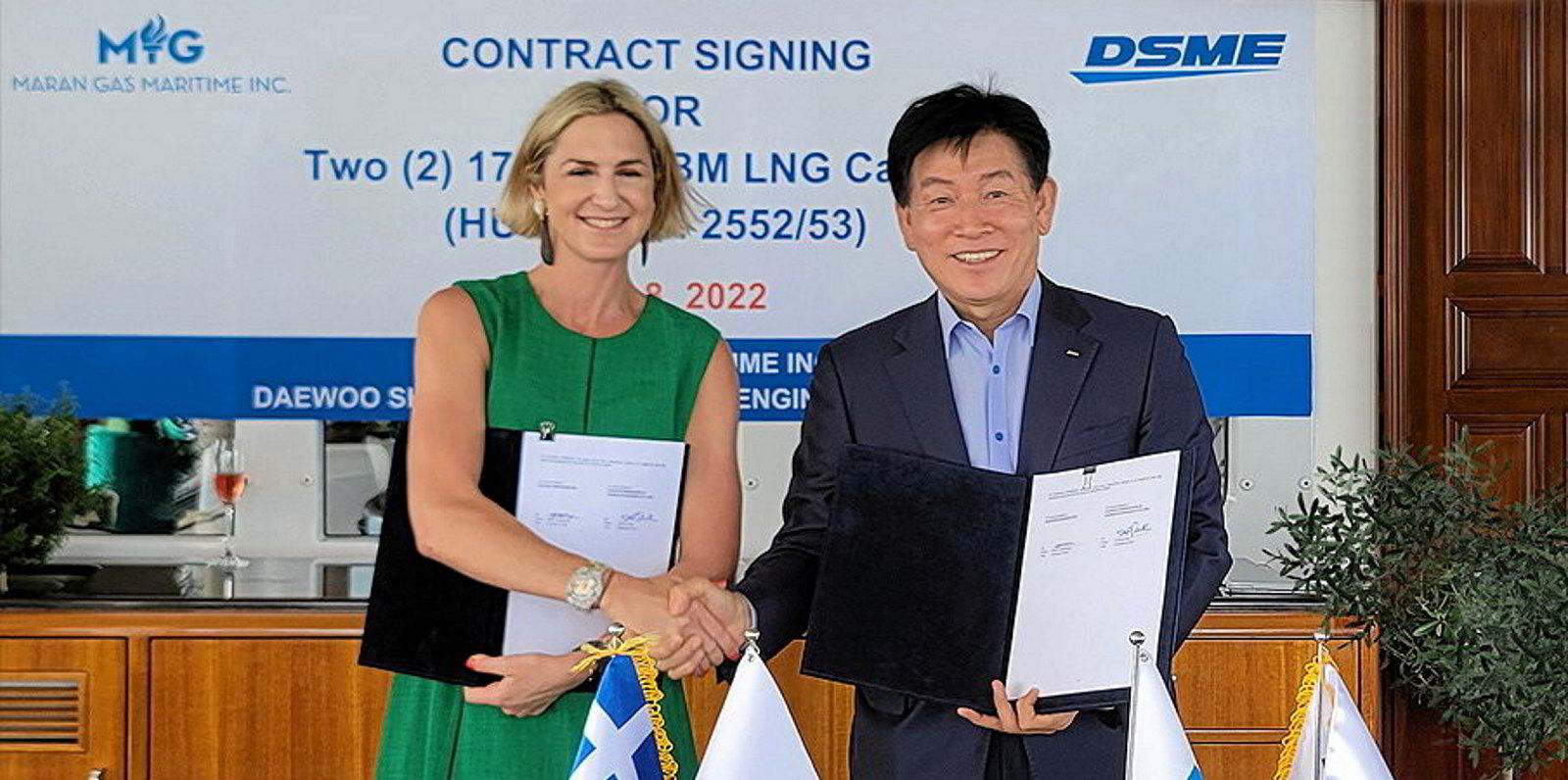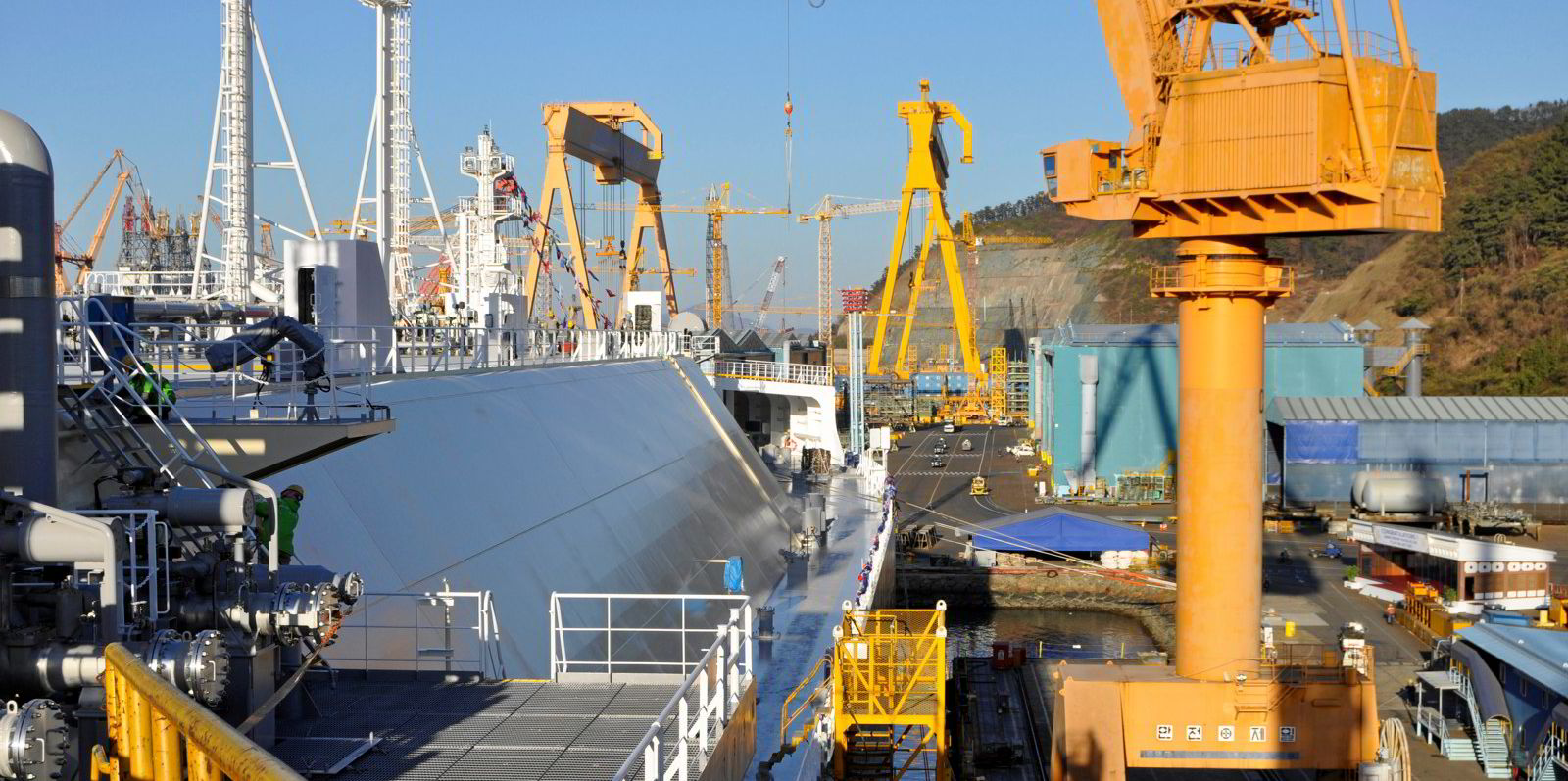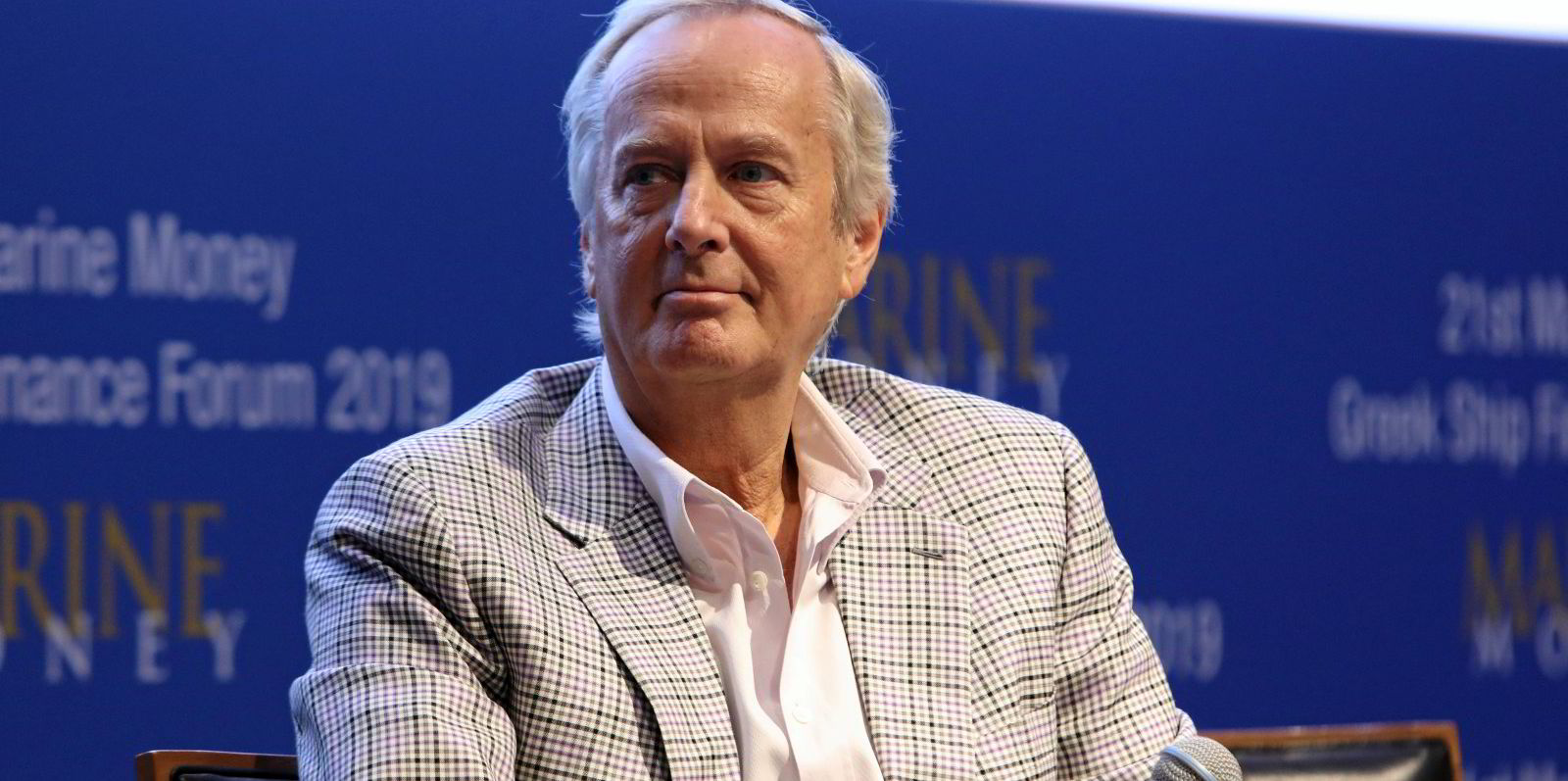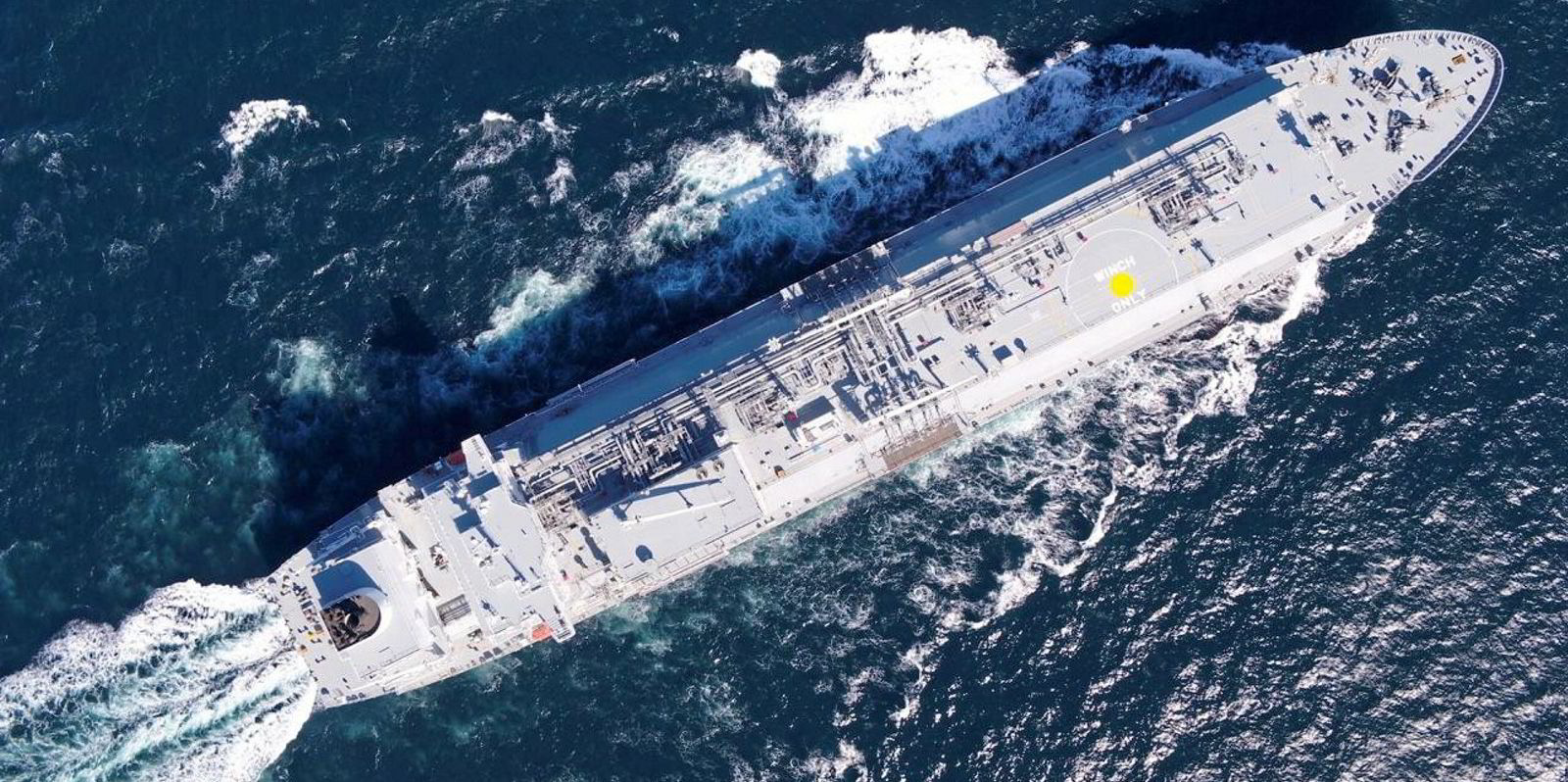Demand for LNG carrier newbuildings is running hot amid projections of increased mid to long-term demand for shipping and gas’ role as a transition fuel in decarbonisation.
Estimates swirl on the number of additional new vessels that might be needed, with figures ranging from 70 to 90-plus ships just for the sanctioned and under-construction liquefaction projects alone.
Fleet replacement and spot trading needs to have the potential to hike this number, particularly with incoming tougher emissions regulations from 2023.
But there is a problem. The earliest delivery dates are more than four years away in late 2026 and shipbuilders are only offering these to their most favoured clients.
Frustrated LNG carrier owners told TradeWinds that shipbuilders are unwilling to talk about 2027 berths as they are unable to price the slots from five years out.
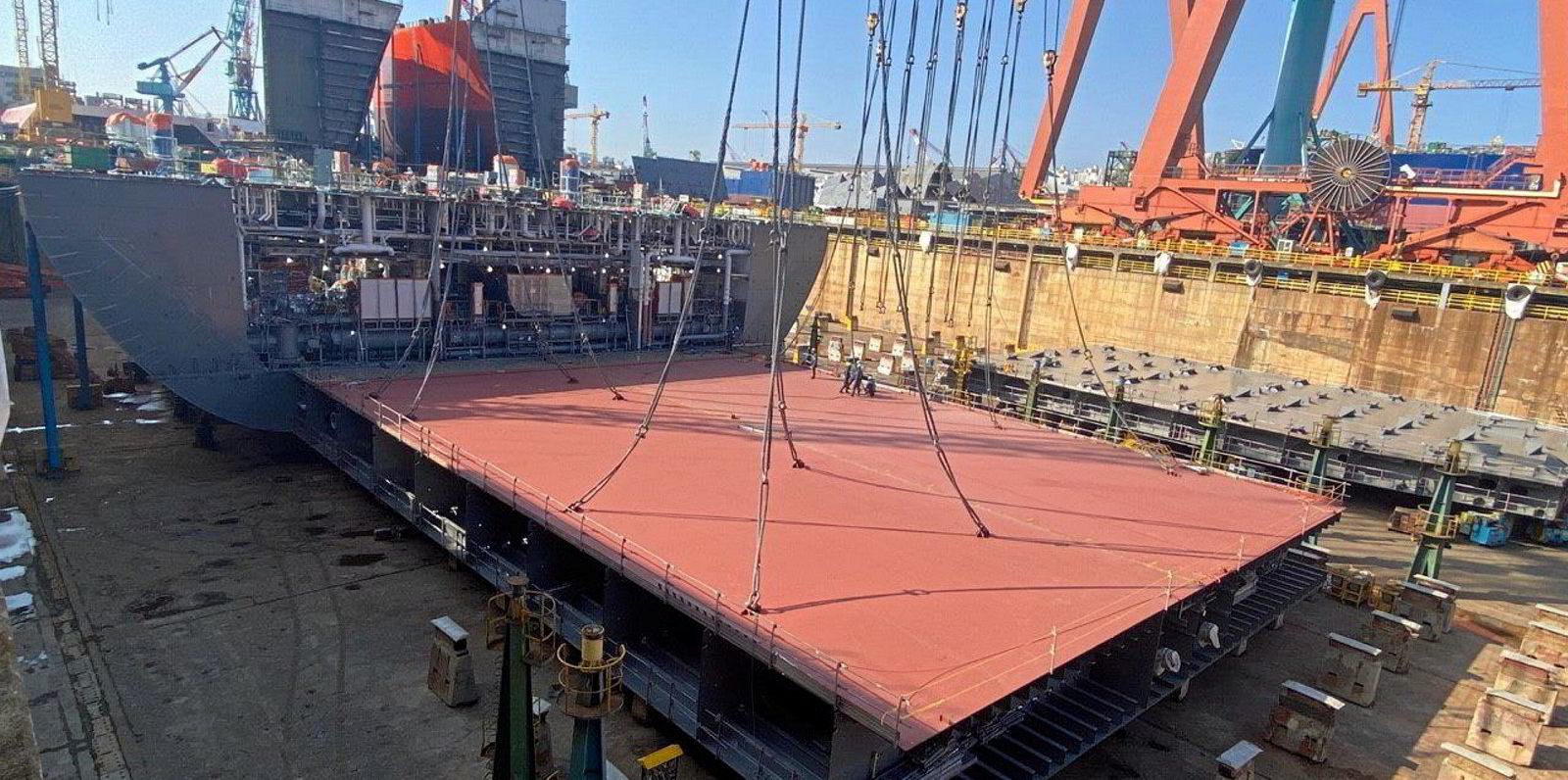
The bottleneck is QatarEnergy’s huge LNG berth reservation deal for up to 151 vessels at four major shipyards, the crush of existing LNG carrier and container ship orders at yards, exacerbated by a fresh incoming wave of demand for boxships from cash-rich owners and charterers.
But those hungry for LNG carrier tonnage are not to be thwarted. Vessels and berths are being conjured up, albeit at top dollar prices, in deals being kept out of the spotlight.
TradeWinds has reported on how TMS Cardiff Gas’ surprise orders in May for two LNG carrier newbuildings at Samsung Heavy Industries were achieved after slots formerly reserved under the Qatari deal were released.
It begs the question as to how many more of these berths for Qatar could become available.
The stalemate is also turning some would-be buyers’ attention to existing modern tonnage and newbuilding resales as a possible alternative.
At the end of May, it emerged that Eastern Pacific Shipping had snapped up two LNG carriers originally ordered by Nigerian trader Bono Energy in South Korea.
Talk of these resales rumbled around the industry for more than a week before they were finally sold — apparently directly by the yard in the end at $231.7m each — with several buyers being linked to them.
Close observers of the resales muttered darkly about the complexity and secrecy surrounding them, who exactly was offering the ships and to whom.
It was a similar story with the bank sale of four LNG carriers formerly controlled by Russian shipowner Sovcomflot (SCF Group). These ships were also bought by Eastern Pacific but some would-be buyers have questioned why they were not even approached to bid on them.
With the resales to Eastern Pacific now out of the bag, industry players are starting to open up about rumoured discussions on other LNG vessels.
One owner said that at one stage, two uncommitted LNG carrier newbuildings controlled by BW LNG were being touted for sale. But these have since evaporated and it is unclear if they were ever serious candidates.
A broker spoke about two vessels from Flex LNG’s fleet being marketed at a very high price. But similarly talk of these ships has died, amid comments about “creative broking” and the vessels being locked into charters.
Shipowners can clearly see upcoming demand for LNG carrier tonnage and are starting to show their frustrations at not being able to grow their fleets in time to meet this.
Prices have already hit record highs for membrane-type LNG carriers, topping the $230m mark, up from $211m in January and $189m a year ago. But recent term charter deals concluded on a 2023-delivering ship could support these levels, brokers said.
Not everyone is buying the South Korean yards’ line on not being able to price orders for 2027 deliveries.
“They are using pricing as an excuse,” one said, indicating that this will test to see if owners are prepared to pay up for berths this far out.
“When this Qatari show is over, we may have established a relationship with a Chinese yard.”
And the current dearth of LNG berths could alter the shipbuilding landscape for this sector.
Two new Chinese shipbuilders have already dived into this business and signed up a raft of orders, amid talk that other compatriot yards may join them shortly, and South Korean and Japanese yards could revive their LNG shipbuilding capacity.
